I always get excited when we get a chance to review a product from Apologia Educational Ministries. Thanks to the Homeschool Review Crew, I was introduced to this company a few years ago. I remember, at one point I thought Apologia only provided science curriculum. How mistaken I was. They offer materials in so many different subjects, such as Bible, Language Arts, Geography, History, Civics, and Devotionals. They also have preschool products. All of their materials are designed to help Christian homeschool families defend their faith. I love that all their materials have a Biblical worldview. Not only that, their science materials are creation-based. This is extremely important to me, as one of the reasons we are homeschooling is to keep the children from being taught the lies of evolution.
The last time there was actual science curriculum available through the Crew from Apologia, my children were all too young to use it. I really enjoyed the other materials we reviewed in the past, but I was extremely excited to have a chance to review an actual creation-based science curriculum this time around. The curriculum we were sent was Exploring Creation with Astronomy, 2nd Edition.
During the course of this review period, we were on our summer session schedule. It was perfect timing to try out a different science curriculum. I loved the look of the books when I was perusing the site, and was even more impressed with them when we received them.
We were sent the following items:
- Astronomy 2nd Edition Student Text
- Astronomy 2nd Edition Notebooking Journal
- Astronomy 2nd Edition Junior Notebooking Journal and
- Astronomy 2nd Edition Audio CD (MP3 Audio Book)
While using Exploring Creation with Astronomy, children will take a closer look at the planets in our solar system, plus such things as space rocks, dwarf planets, the Kuiper Belt, and then beyond to stars and galaxies. There will also be a chance to learn about the history of space travel and NASA.
Let's take a look at the Student Text:
First there is an Introduction that helps explain how to use the books. Following this short section, you will find that the book is broken up into 14 lessons.
- What Is Astronomy?
- The Sun
- Mercury
- Venus
- Earth
- The Moon
- Mars
- Space Rocks
- Jupiter
- Saturn
- Uranus
- Neptune
- Kuiper Belt and the Dwarf Planets
- Stars, Galaxies, and Space Travel
In the rear of the Student Text you will find the Appendix which includes a Supply List (broken up by lesson), an answer key to the "What Do You Remember?" sections, and an index.
Each lesson begins with a "Wisdom From Above" section which helps to get the students' (and parent's) mind focused on God. It is a little introduction to the lesson with a Bible verse.
Each lesson is then broken up into short sections. These sections are separated by the use of large, bolded text announcing the name of the section.
All of the lessons have several activities that help bring a hands-on aspect to this curriculum. These activities are presented in shaded boxes to help them stand out. These sections tell you what "You will need," what "You will do" or the "Procedure," and may also have a Discussion section, so you know what to discuss with the children.
As you read through the lesson, there are wonderful, detailed color images.
Occasionally, after a section, you will be prompted to ask the child(ren) to explain what was just read in their own words. There are also "Think About This" boxes that help us to connect what we just learned with truths from the Bible. Each lesson concludes with a "What Do You Remember?" section which asks several questions related to what was learned in the lesson. This is one of the sections that is found in the Notebooking Journals.
I was thrilled that we were sent both the Notebooking Journal and the Junior Notebooking Journal. The regular journal was perfect for Tabitha as it is meant for grades 3 or 4 and older. Amelia was able to use the junior version of the journal, which is designed for children in grades K-2nd or 3rd grade. These journals give the children the ability to record what they are learning and to make a sort of scrapbook.
Let me just say that I love the Suggested Daily Schedule in these journals. Each lesson is broken up into Daily Assignments. Each assignment includes the reading section from the textbook (in green), the Notebook assignments (in blue) and additional activities found in the Apologia Science Kit (in brown), which we did not receive, so we had to forego those activities. Don't worry though, there is plenty of learning going on even if you are just reading the text, doing the textbook activities, and filling in the journals.
All of the pages in the journal help to enhance the child's learning. There is a "Fascinating Facts and Personal Reflections" section that the child is to fill in a little at a time as they go through the lesson.
When the child participates in one of the activities which is detailed in the textbook, they have a space in their journal to write in what they did and what they learned.
Also included are little minibooks. The components for these books need to be cut out of the pages in the notebooking journal. Then the child is to follow the directions for folding, gluing, and writing information.
This feature definitely reminds me of a scrapbook or lapbook. I love how they become a part of the journal, and aren't just cut out to be misplaced (which, I admit, happens a lot in our house).
Here are the girls, working on their page.
Speaking of scrapbook pages, each lesson has a couple of "Take It Further" pages that allow the child to add additional drawings, experiments, books read, and movies watched.
Each lesson also has a couple of pages of copywork. These Bible verses can be written in print and/or cursive. I have chosen to have the girls work on print for now, as we haven't practiced cursive for quite a while. Besides, they could both use some handwriting practice.
Now, you may have noticed that the notebook lines in the last picture are not the same as the lines in the previous pictures. That is because this page is from the junior journal. The main difference between the two levels of the journal, is that the one for older children has narrower lines, while the one for younger children has wider lines, with the dotted center line.
Another difference between the levels is that the crossword puzzles in the junior journal include some letters in the puzzle to help the children figure out which words go where.
While the regular journal does not.
Another surprising difference is that the regular journal has the child answer the "What Do You Remember?" questions that I mentioned above, while the junior journal includes two relevant coloring pages.
Here is what the "What Do You Remember?" page looks like:
Here is one of the coloring pages from the junior journal.
Even though the journals are for the older girls, we have been able to successfully include the younger children in the lessons, through the readings and the activities. Here is a look at some of the activities we are done so far.
As you might be able to tell, we have been having a blast with Exploring Creation With Astronomy from Apologia. I just LOVE all the hands-on aspects of this curriculum. I think it is so neat that there are little minibooks inside the big journal, really giving it a scrapbook feel. The various activities have all been fun and simple to have all the children participate in, and the supplies have been easy to find.
Of course, the fact that this is creation based is a huge plus. I loved when it was explained that the sun is getting hotter and hotter, and if there was a universe billions of years ago, as evolution states, the sun wouldn't have been able to have supported life. I think the way the author keeps bringing the children back to the Bible, and God is wonderful. We are learning that God created this world the way He did with a purpose.
I also appreciate how flexible this curriculum is. Yes, there is a suggested daily schedule. However, I was able to take those assignments and split them up so we were working 1/2 of the assignments on one day and the rest on another, spreading the curriculum out a bit more, and not having so much work on one day. And if mom is too busy or too tired to read the textbook, all you have to do is put the Audio CD in the computer and click on the section you are on, and the children can listen to the author read the lesson. Of course, the CD is not a necessity, but it is nice to have. I just wish it was a regular CD so we could take it along in the van.
One of these days we would love to supplement this curriculum with a nice field trip to nearby Cherry Springs State Park to go star gazing. This would be a perfect opportunity to use our Exploring Creation Field Trip Journal that we reviewed last year. Yes, another wonderful product from Apologia Educational Ministries. I invite you to check out my Field Trip Journal review.
This is a wonderful curriculum, and I highly recommend it for Christian homeschool parents who want to teach their children about astronomy without having to worry about "millions of years."
Don't forget to click on the banner below to visit my fellow Crew Mates and see what they had to say about Exploring Creation With Astronomy.

































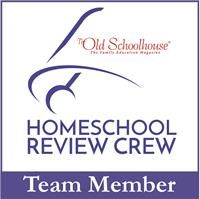
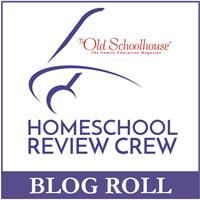














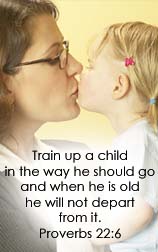



![[PREMIO2009.png]](https://blogger.googleusercontent.com/img/b/R29vZ2xl/AVvXsEjXD_Gx-wZ9EM5hXKrEYLksEBkYfRQtmb8VDVTDG_yyLggQoFIstZsh4zszdG20KqErZicRzEhiNYLty7j3IMXJYsABqkXjr8pp-ncj71xCbpxlXGbGpZq2fTuDQqq1RMKV4DPcDBnBViA/s1600/PREMIO2009.png)
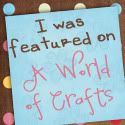
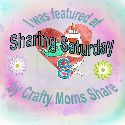


No comments:
Post a Comment
Thank you for visiting my blog today. I love to read your comments, so please leave me one if you have the time.
Blessings